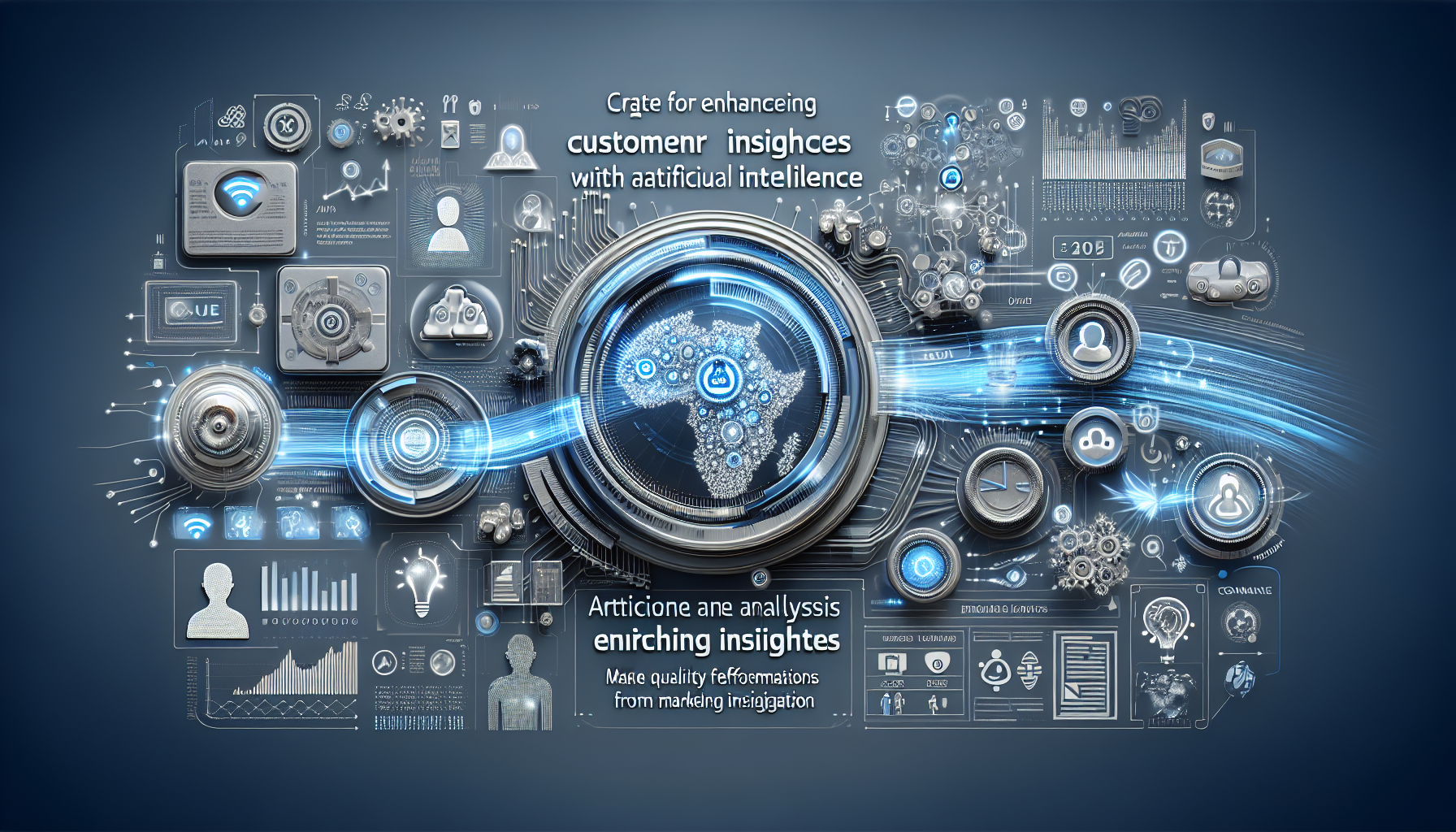Boost Customer Insights with AI in 2025 - Learn

Discover how AI transforms customer insights in 2025, enabling businesses to predict trends, personalize experiences, and optimize strategies. This article explores the latest tools and techniques for leveraging AI to deepen your understanding of customer needs.
Table of Contents
- Introduction
- Prerequisites/Requirements
- Step-by-Step Instructions
- Common Pitfalls to Avoid
- Advanced Tips
- Conclusion with Next Steps
Enhance Customer Insights with AI in 2025
Introduction
Welcome to the comprehensive guide on enhancing customer insights using artificial intelligence (AI) in the year 2025. By the end of this tutorial, you will learn how to leverage the latest AI technologies to gather, analyze, and interpret customer data more effectively. We will cover practical steps to integrate AI tools into your business processes, highlight the best practices for utilizing these technologies, and discuss the common pitfalls to avoid.
Prerequisites/Requirements
Before diving into the specifics of using AI to enhance customer insights, there are several prerequisites you will need:
- Technical Infrastructure: Access to AI software and hardware capable of processing large datasets.
- Data Collection Tools: Systems in place for collecting customer data across various touchpoints.
- Basic AI Knowledge: Understanding of AI and machine learning fundamentals.
- Compliance and Ethics: Knowledge of data protection regulations and ethical guidelines in your jurisdiction.
Step-by-Step Instructions
Step 1: Establish Clear Objectives
Define what customer insights you aim to enhance using AI. This could include improving customer satisfaction, personalizing marketing strategies, or predicting customer behaviors.
Step 2: Data Collection and Integration
Gather data from various sources such as social media, customer transactions, and feedback systems. Ensure the data is clean and integrated into a centralized AI-enabled analytics platform.
Step 3: Choose the Right AI Tools
Select AI tools suitable for your specific objectives. Tools like predictive analytics, natural language processing, and machine learning platforms are particularly useful.
Step 4: Model Training and Testing
Train your AI models using historical data. Continuously test and refine the models to improve accuracy and reliability in predicting and understanding customer behaviors and preferences.
Step 5: Implementation and Monitoring
Implement the AI solutions in real-world scenarios. Monitor the performance and impact of these solutions on customer insights and business outcomes.
Step 6: Feedback Loop
Establish a feedback loop where the AI system learns from its successes and failures to improve over time. Regularly update the data and models based on new customer information and feedback.
Common Pitfalls to Avoid
Enhancing customer insights with AI can be challenging, and here are some common pitfalls to avoid:
- Ignoring Data Quality: Low-quality data can lead to inaccurate AI predictions. Always ensure your data is accurate and comprehensive.
- Over-reliance on AI: AI should support, not replace, human decision-making. Use AI as a tool to augment human intelligence.
- Lack of Transparency: AI systems can be complex. Maintain transparency in how AI decisions are made to build trust among stakeholders.
- Ignoring Ethics: Always consider the ethical implications of using AI, especially in terms of privacy and bias.
Advanced Tips
For those looking to further enhance their AI capabilities, consider the following advanced tips:
- Invest in Continuous Learning: AI models can become outdated. Invest in systems that continuously learn and adapt to new data.
- Use Augmented Analytics: Utilize AI to automate data analysis and gain insights more efficiently and accurately.
- Experiment with AI Technologies: Don't be afraid to experiment with emerging AI technologies like quantum computing for complex data analysis.
Conclusion with Next Steps
By following the steps outlined in this tutorial, you should now be equipped to enhance your customer insights using AI effectively. The next steps involve staying updated with the latest AI trends and continuously refining your approach based on feedback and new data. Remember, the goal of using AI is to augment your understanding of customers and make more informed business decisions.
Frequently Asked Questions
What are the key steps to enhance customer insights using AI in 2025?
Enhancing customer insights with AI involves several key steps: collecting diverse customer data, implementing advanced AI algorithms, integrating real-time analytics, personalizing customer interactions, and continuously learning from feedback to refine the AI models. Each step is crucial for leveraging AI effectively to gain deeper and more actionable insights into customer behavior and preferences.
How does AI improve data analysis for better customer insights?
AI enhances data analysis by utilizing machine learning models to process and analyze large volumes of data quickly and accurately. This allows for the identification of patterns, trends, and correlations that might not be visible through traditional methods. AI-driven analytics can predict customer behavior, personalize experiences, and optimize decision-making processes, thereby providing more precise and actionable insights.
What challenges might companies face when using AI to gain customer insights in 2025?
In 2025, challenges may include data privacy and security concerns, the need for high-quality and diverse data sets, integration complexities with existing systems, and the requirement for skilled personnel to manage and interpret AI outputs. Additionally, ethical considerations around AI usage and ensuring transparency in AI-driven decisions are crucial challenges that need addressing.
What are the benefits of real-time AI analytics in understanding customer behavior?
Real-time AI analytics provide immediate insights into customer actions and preferences, enabling companies to react promptly to customer needs and market changes. This immediacy helps in enhancing customer satisfaction, improving engagement, and increasing retention rates. Furthermore, real-time analytics can aid in the detection of anomalies and potential issues, allowing for quick resolution and better customer service.
Sources and References
- MDN Web Docs - Comprehensive web development documentation
- Stack Overflow - Programming community and solutions
- GitHub - Code repositories and open source projects
- W3C Standards - Web standards and best practices
